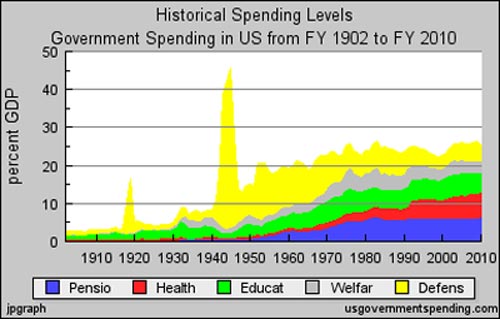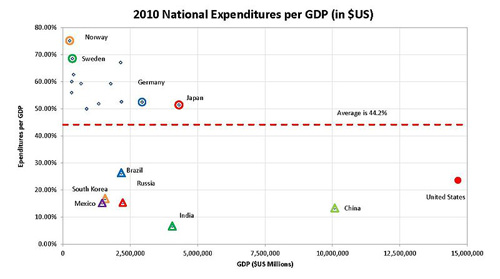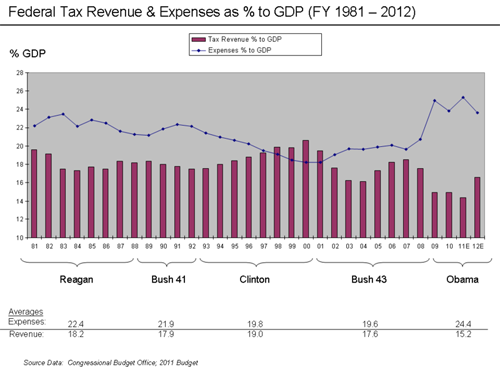Government Spending in the United States
Is It Out of Control?
The short answer is no; not yet. U.S. government spending today is roughly the same as it's been for over 40 years at about 25% of GDP.
See this chart:

Compared to other countries, the United States is actually rather frugal:


And, one would think that with the costs of the wars and recession ebbing, our spending should be trending down.
Except for one thing: health care costs. Look at the chart at the top of the page again and notice how runaway health care costs are driving our spending (and thus the deficit) higher. If we simply implemented a more efficient national health care plan; ended the Bush tax cuts for the wealthy; and adjusted social security a bit -- we would have no fiscal problems in the United States.
Discretionary spending has been declining as a percent of GDP for decades and now accounts for only about one-third of spending by the federal government. It includes military spending, law enforcement (FBI), highway funds, education, scientific research, food inspection, environmental programs, etc. Congress determines each year in the budget how much to spend on these "discretionary" things. And Congress has been budgeting less and less for these things. Military spending is the majority of this spending and the only part of discretionary spending that has been growing in recent years (though set now to decline). Even there, an increasing share of the Department of Defense budget also goes to pay for health care for it's military members and employees.
Mandatory spending is the big driver of our budget. And, most of that is for entitlement programs like Social Security, Medicare, Medicaid, federal retirement pensions, etc. These are programs where benefits have been established and are paid out each year depending on how many people qualify for them. Unless Congress changes the rules, these entitlement programs must be paid for. By far, Social Security and Medicare are the biggies here.
You can see what I mean on this chart:

You can read more in this report showing mandatory spending up; discretionary spending down.
This chart tells the whole story and shows how federal revenue (taxes) as a percent of GDP has been going down while expenses have gone up:

Really all of this comes down to one thing we've addressed in detail over and over on this site. When it comes to government spending in the United States, medical costs are the whole ball of wax. They have increased faster than anything else for decades and they are about to shift into overdrive as our population ages. If we can reduce them, our fiscal problems fade away. If we ignore them -- nothing else we do will matter.
Even better, not only will we avoid financial bankruptcy for our country and individual citizens, but also we can provide health care for millions who don't have it now. To see how read The Gospel and Universal Health Care.
 Custom Search
Custom Search